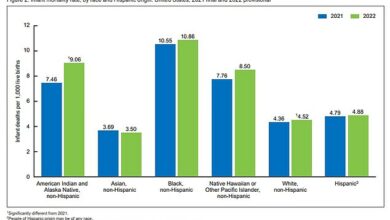NHS launches pacemaker without wires… and that reduces the risk of painful complications





Patients who turn to the NHS are being offered a ground-breaking leadless pacemaker that reduces the risk of painful complications.
Traditional pacemakers use wires and a generator under the skin to keep the heart beating regularly. However, the device can short out and the generator can become infected. Patients then have to undergo complicated surgery to replace the generator.
The innovative AVEIR DR is now being hailed as a world first. A global study published last year in the journal New England Medical showed it has a 97 percent success rate in normalizing a patient’s heart rate.
However, the biggest advantage of the device is that it completely eliminates side effects such as infection and pocket hematoma.
“Complications such as infections are common with normal pacemakers, which is why this is so exciting,” said Professor Tom Wong, who performed the first procedure.

The dual device could provide effective treatment for many more of the two million people in the UK with heart rhythm problems. (Stock photo)

Now the innovative AVEIR DR has been hailed as a world first, with a global trial published last year in the journal New England Medical
‘This is a technical feat, with low risk and a highly effective device.’
A 2017 study published in the Journal of the American College of Cardiology found that one in six patients with a traditional pacemaker experiences complications within three years.
The new pacemaker consists of two pill-like devices, each about the size of a AAA battery. They are implanted directly into the heart through a leg vein, rather than through the shoulder as with traditional devices, speeding recovery time.
The “pills” are located in two chambers of the heart – the right atrium and the right ventricle – and communicate with each other while sending out electrical impulses to regulate the heartbeat.
A few wireless implants of this kind have been offered before, but most heart problems affect both chambers, meaning that a limited number of patients were eligible. The dual device opens up the possibility of effective treatment for many more of the two million people in the UK with heart rhythm problems.
Earlier this month, Mohamed Benkahoul, 56, became the first person in the country to receive the device outside of the trial period.
The father of two from London, who has end-stage renal failure, became a candidate after his normal pacemaker became infected and failed two years ago.
Without a working pacemaker, he faced debilitating problems related to his poor heart function, including swelling in his limbs, shortness of breath and weight gain.

Traditional pacemakers use wires and a generator under the skin to keep the heart beating regularly. (Stock photo)

The pacemaker’s availability within the NHS follows a successful rollout in the US and the EU. (Stock photo)
It is hoped the device will allow him to become active again and lose enough weight to qualify for a kidney transplant.
“I was so happy to be the first person to get this pacemaker,” Mohamed says. “It’s already helping me in my daily life, I can go out and socialize again.
‘The doctors have also told me that I can now undergo full dialysis treatment, something my heart could not handle before.’
The pacemaker’s availability within the NHS follows a successful rollout in America and the EU.
Over the coming months, the device will be administered at specialist hospitals including St Thomas’ Hospital in London and Basildon University Hospital in Essex. It will first be available to high-risk patients whose traditional pacemakers have failed.
“This is a life-changing device and in time it will become commonplace for everyone, but much research still needs to be done on the long-term effects,” says
Professor Wong: ‘It’s still in its infancy.’




